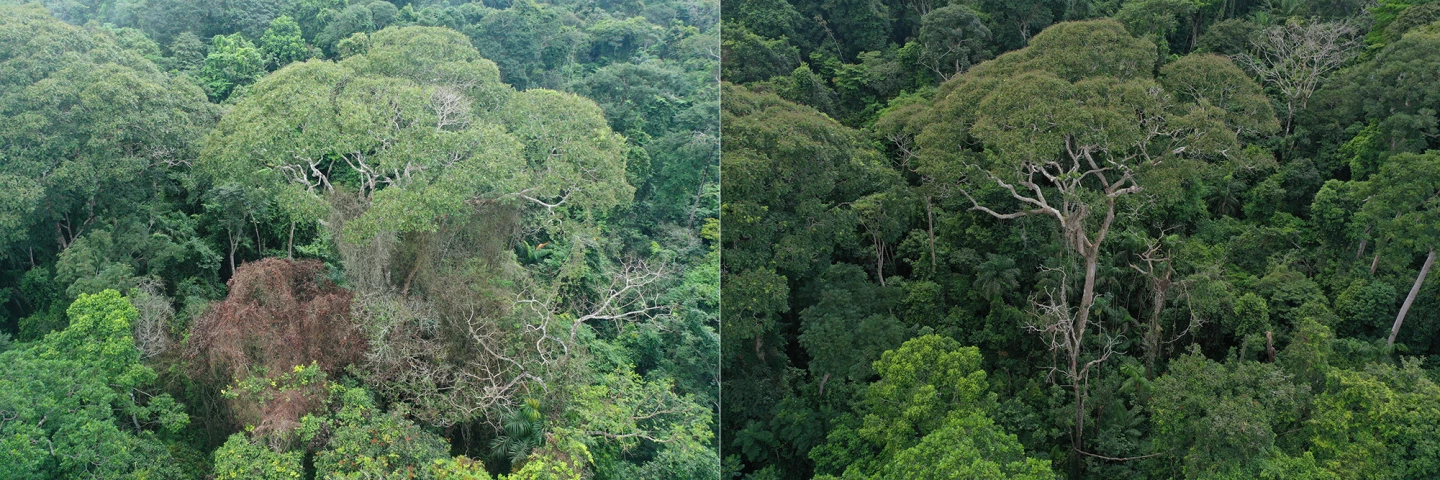While lightning is a fascinating phenomenon, it's also infamous in its capacity for destruction and the danger it poses to life. Each year, lightning claims hundreds of millions of trees worldwide, leaving behind scorched trunks and shattered branches. Yet, in an intriguing twist of nature, some tropical trees have turned this destructive force of nature to their advantage.
A recent study reports that the tropical almond tree Dipteryx oleifera (also known as almendro), not only survives direct lightning strikes but thrives because of them. Researchers discovered that a lightning strike damages the surrounding trees that directly compete for resources and also blasts away lianas, those woody parasitic vines known to strangle and reduce the growth of many rainforest trees.
Researchers long suspected some tree species had tolerance towards lightning, but no empirical evidence existed to back up this hypothesis. The team of researchers, led by Evan Gora, deployed a lightning location system across Barro Colorado Nature Monument in central Panama to track the after-effects on 93 trees struck by lightning.
Over six years, scientists paid special attention to nine D. oleifera trees that were zapped. Remarkably, every single tree survived with only minor damage. In contrast, all other trees subjected to a direct hit were severely damaged, and nearly two-thirds died within two years of the strike.
“Seeing that there are trees that get struck by lightning and they’re fine was just mind blowing,” says Gora.

On average, a single lightning strike cleared out 9.2 neighboring trees as the current passed along via vines and adjoining branches. Additionally, the liana infestation on D. oleifera decreased by 78%. With less competition for sunlight, space, and nutrients, these trees increased their fecundity (ability to produce offspring) by 14 times.
That competitive advantage shows up in the canopy: drone-generated 3D canopy mapping revealed the lightning-struck almendros stood about 4 m (13 ft) taller than their unstruck neighbors. With this towering trait, D. oleifera turned out 68% more likely to be struck than other trees, acting as a natural lightning rod. Since D. oleifera trees can live for hundreds of years, they are expected to withstand multiple strikes throughout their lives.
“It's better off for a Dipteryx oleifera tree to be struck than not,” says Gora.
In evolutionary terms, D. oleifera has employed a very unusual survival mechanism. It appears warding off rivals and parasites at the cost of minor visible injury is a winning strategy.
The study was published in New Phytologist.
Source: Cary Institute






